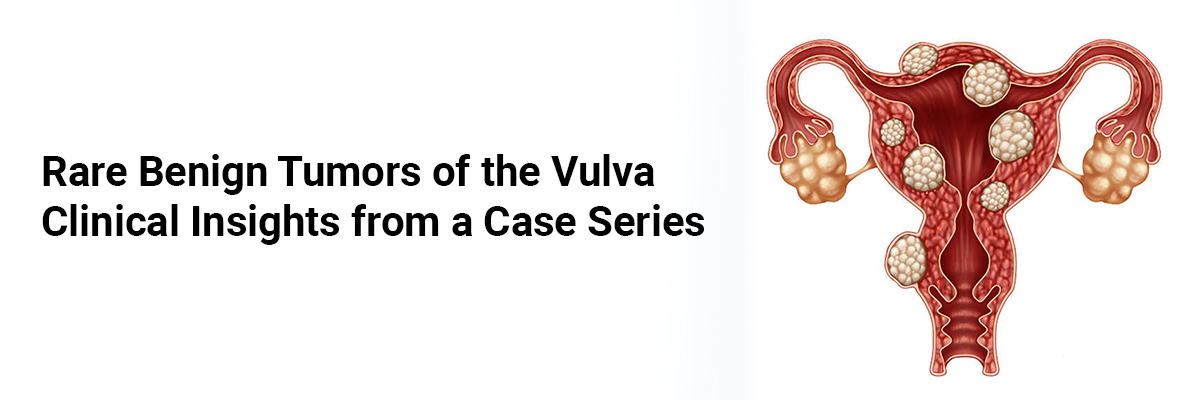
 IJCP Editorial Team
IJCP Editorial Team
Rare Benign Tumors of the Vulva: Clinical Insights from a Case Series
Vulvar tumours are rare benign lesions in the lower genital tract, often requiring gynaecological consultations. Three distinct presentations include vulvar angiofibroma, phyllodes tumour of the vulva, and haemangioma of the vulva. Diagnostic and management challenges vary, with phyllodes tumours showing a higher recurrence rate, while angiofibroma and haemangiomas are less likely to recur.
Hemangiomas are soft, proliferative tumors most commonly found in the cervico-facial region. Vulvar hemangiomas are rare and tend to grow rapidly. These are usually painless swellings on the vulva that gradually increase in size. Common differential diagnoses include fibrolipoma and hamartoma.
A 28-year-old woman presented with a painless swelling on the left labium majus. The mass started small and gradually enlarged to about 5×6 cm. She had a history of two full-term vaginal deliveries and no significant personal, family, or medical history.
A surgical excision of the mass was performed, and a histopathological examination confirmed it to be a cavernous hemangioma of the vulva. Most vulvar tumors are benign and can be initially assessed using ultrasound, with a definitive diagnosis confirmed by histopathology.
The main treatment approach is surgical removal, followed by clinical monitoring to detect any recurrence or the rare chance of malignant transformation.
Recurrence rates depend on the tumor type: vulvar angiofibromas rarely recur, phyllodes tumors may recur if not completely excised, and hemangiomas generally have low recurrence rates after surgical treatment.
(Source:Indian Journal of Obstetrics and Gynecology Research 2025; 12(1):151–154 https://doi.org/10.18231/j.ijogr.2025.027}

IJCP Editorial Team
Comprising seasoned professionals and experts from the medical field, the IJCP editorial team is dedicated to delivering timely and accurate content and thriving to provide attention-grabbing information for the readers. What sets them apart are their diverse expertise, spanning academia, research, and clinical practice, and their dedication to upholding the highest standards of quality and integrity. With a wealth of experience and a commitment to excellence, the IJCP editorial team strives to provide valuable perspectives, the latest trends, and in-depth analyses across various medical domains, all in a way that keeps you interested and engaged.





















Please login to comment on this article